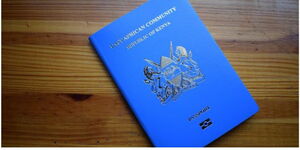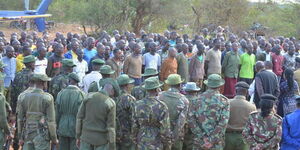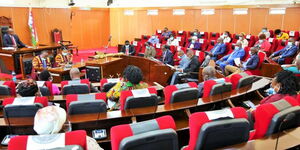Muthaiga Estate in Nairobi is known for its lush green trees, freshly manicured lawns and a host of some of Kenya's wealthiest individuals.
However, not many know of the origins story of the leafy suburb located in the heart of Karura Forest.
In 1901, there was a man by the name John Ainsworth, who was the Nairobi sub commissioner - equivalent to a County Commissioner in today's current set up.
An alleged free mason, the commissioner earned his nickname “Lord Muthaiga” due to constant raids in the area back in the day.
What came to be Muthaiga Estate was still a canopy of indigenous trees back then, with one particular highly regarded by the local Kikuyu medicine-men.
The elders described the tree as gigantic with its bark a cure for almost every disease that was proving to be a menace during the pre-colonial era. They duly nicknamed it the 'Muthaiga' tree.
In Kikuyu language the word Muthaiga is singular and “Mithaiga” is the plural, both translating to drugs in general.
Lord Muthaiga became a legend among the locals as he openly fought and expelled Karuri wa Gakure, one of the most feared traditional healers at the time.
He then settled in the area and quickly went about building what was to become Kenya's capital city, Nairobi.
The architectural planning of government institutions was influenced by freemasons who were brought into the country by Grand Master Temple Moore, the only known Freemason architect available around that time in 1917.
The architect was also used to personally design the commissioner's residence in what later turned out to be Kenya's most prime piece of real estate.
Some of the buildings designed by the free mason within the city are: All Saint’s Cathedral, St Andrews Church, and the Freemason hall that overlooks it, McMillan Library, Kipande House, Pan Africa House, Kenya Railways headquarters, High Court and City Hall
It is evident that the Freemasons defined Nairobi’s early Architecture, and all the strong and unique buildings found all over Kenya have masonry influence.
All are classical gothic, medieval and roman architecture combined and even national monuments around the city were crafted by masons.
These artists were free to work anywhere, and they came to Kenya with their genius for bricklaying, stone carving and meticulous construction that is evident more than a century later.
The layout and designs of the city early shops and building was borrowed from Washington DC, Paris London, Cape Town, Pretoria, New Delhi India and La Plata, a city in Argentina.
Lord Muthaiga is said to have been buried at what was known as the Muthaiga Roundabout, with an Obelisk monumental grave stone (used by all masons) that was visible at the spot said to have been erected to honor the neighborhood's founder.












